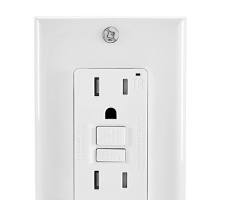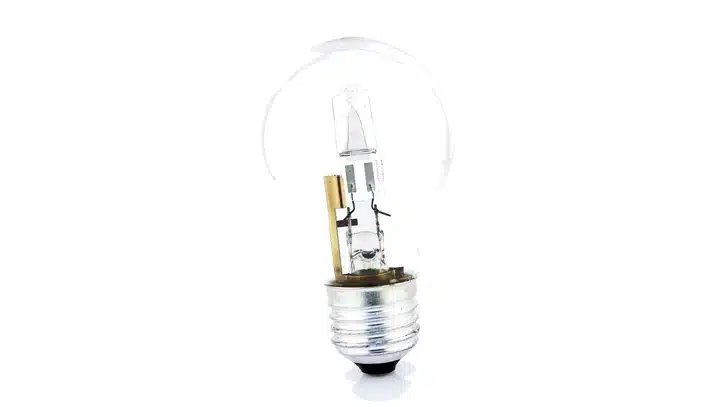Explore the vibrant world of Meadow Sage in this comprehensive guide to a perennial favorite. From its botanical origins to cultivation tips and the myriad of varieties available, delve into the enchanting realm of Meadow Sage and discover why it’s a cherished addition to gardens worldwide.
Table of contents
What is Meadow Sage
Meadow Sage, scientifically known as Salvia nemorosa, is a perennial herbaceous plant renowned for its captivating beauty and versatility in garden landscapes. Originating from the Lamiaceae family, this plant is a member of the larger Salvia genus, which includes a diverse range of aromatic and ornamental species. Meadow Sage, also called Woodland Sage or Balkan Clary, is native to Europe and Asia, where it thrives in meadows, woodlands, and sunny slopes.
Botanical Characteristics:
Meadow Sage is characterized by its erect, square stems that can reach varying heights depending on the specific cultivar, ranging from 12 inches to 36 inches or more. The lance-shaped leaves are often gray-green and emit a pleasant fragrance when crushed.
What distinguishes Meadow Sage is its striking flower spikes, which emerge in late spring to early summer. The densely packed whorls of tubular flowers, typically in shades of blue, violet, pink, or white, create a visual spectacle that attracts pollinators like bees and butterflies.
Ideal Growing Conditions:
To cultivate Meadow Sage successfully, it’s essential to provide optimal growing conditions. This perennial thrives in well-draining soil with a neutral to slightly alkaline pH. While it can tolerate some drought, consistent moisture benefits robust growth and prolific flowering. Planting in full sun is generally recommended, although some varieties can tolerate partial shade. Adequate air circulation helps prevent fungal diseases, making spacing between plants crucial.
Propagation Methods:
Meadow Sage can be propagated through various methods, including seeds, division, and stem cuttings. Seeds can be sown indoors before the last frost and transplanted once the seedlings are established. Division involves separating mature plants into smaller sections, ensuring each division has roots attached. Stem cuttings from late spring to early summer can also be rooted to produce new plants. Each propagation method has nuances, offering flexibility for gardeners with different preferences and skill levels.
Varieties and Cultivars:
The world of Meadow Sage is vast, with numerous varieties and cultivars that cater to diverse preferences. Popular cultivars include ‘Caradonna’ with deep purple flowers, ‘May Night’ known for its compact habit and violet-blue blooms, and ‘East Friesland’ featuring intense violet flowers. Exploring these variations allows gardeners to create visually appealing landscapes while enjoying the unique characteristics each cultivar brings to the garden.
Landscaping and Design Tips:
Meadow Sage’s versatility makes it a valuable asset in various garden settings. Its spiky form and vibrant colors make it an excellent choice for border plantings, cottage gardens, and mixed perennial beds. Combining Meadow Sage with other sun-loving perennials and ornamental grasses can create dynamic and visually appealing compositions. Additionally, the plant’s attractiveness to pollinators contributes to the ecological balance in the garden.
Cultivation Tips For Meadow Sage
Cultivating Meadow Sage (Salvia nemorosa) is a rewarding endeavor that requires attention to critical factors to ensure robust and vibrant plants. Here are essential cultivation tips for nurturing Meadow Sage in your garden:
#1. Soil Preferences:
Meadow Sage thrives in well-draining soil with a preference for slightly alkaline to neutral pH levels. Amending the soil with organic matter, such as compost, enhances fertility and aids in moisture retention without sacrificing drainage.
#2. Watering Needs:
While Meadow Sage exhibits some drought tolerance, providing consistent moisture is crucial, especially during dry spells. Water the plants thoroughly, allowing the soil to dry slightly between waterings to prevent soggy conditions leading to root rot.
#3. Sunlight Requirements:
Meadow Sage is a sun-loving perennial that flourishes in full sunlight. Planting it in a location that receives at least 6-8 hours of direct sunlight daily promotes sturdy growth and profuse flowering. However, some varieties can tolerate partial shade, making them adaptable to different garden environments.
#4. Planting and Spacing:
When planting Meadow Sage, ensure proper spacing between individuals for good air circulation. This helps prevent common fungal issues and promotes overall plant health. Follow the recommended spacing guidelines for the specific variety you’re cultivating.
#5. Pruning and Deadheading:
Regular pruning and deadheading contribute to prolonged flowering and a tidy appearance. Remove spent blooms to encourage the production of new flowers and trim back the entire plant in late fall or early spring to maintain a compact, bushy form.
#6. Fertilization:
Meadow Sage generally does not require heavy fertilization. A balanced, slow-release fertilizer in early spring can provide the nutrients for healthy growth. However, avoid over-fertilizing, as excessive nitrogen can lead to leggy plants with reduced flowering.
#7. Mulching:
Mulching around Meadow Sage plants helps conserve soil moisture, suppress weeds, and regulate soil temperature. Apply a layer of organic mulch, such as straw or bark, leaving a gap around the plant’s base to prevent moisture-related issues.
By incorporating these cultivation tips into your gardening routine, you can create an environment where Meadow Sage thrives, showcasing its distinctive beauty and contributing to the overall charm of your garden landscape.
What Are Different Varieties of Meadow Sage
Meadow Sage (Salvia nemorosa) boasts diverse varieties, each contributing unique characteristics and a spectrum of colors to garden landscapes. Delve into the captivating world of Meadow Sage variations to find the perfect fit for your gardening vision:
#1. ‘Caradonna’:
This cultivar is renowned for its striking deep purple flowers that stand tall on sturdy stems. ‘Caradonna’ adds a touch of drama to garden borders and perennial beds, creating a focal point with its vibrant and elegant blooms.
#2. ‘May Night’:
Characterized by its compact habit and rich violet-blue flowers, ‘May Night’ is popular among gardeners. This cultivar offers a profusion of blossoms and maintains a neat appearance, making it ideal for smaller garden spaces.
#3. ‘East Friesland’:
Known for its intense violet-blue flowers, ‘East Friesland’ is a reliable and hardy Meadow Sage variety. Its upright growth habit and vibrant color make it a standout addition to mixed perennial beds, where it harmonizes with various garden companions.
#4. ‘Snow Hill’:
For those seeking a departure from traditional blue and violet hues, ‘Snow Hill’ presents a stunning option with its white blossoms. This Meadow Sage variety adds a touch of purity and elegance to gardens as a versatile companion to other flowering perennials.
#5. ‘Blue Hill’:
Featuring soft lavender-blue flowers, ‘Blue Hill’ is celebrated for its airy and delicate appearance. The slender spikes create a sense of movement in the garden, making it an excellent choice for more informal or cottage garden settings.
#6. ‘Marcus’:
Compact and adorned with violet-blue flowers, ‘Marcus’ is well-suited for container gardening or smaller garden spaces. Its diminutive size doesn’t compromise its impact, as this variety continues to attract pollinators and admirers alike.
#7. ‘Rose Marvel’:
Adding a touch of warmth to the Meadow Sage spectrum, ‘Rose Marvel’ showcases enchanting rosy-pink flowers. This cultivar introduces a soft and romantic element to gardens, creating a delightful contrast amidst other flowering perennials.
These Meadow Sage varieties represent just a fraction of the expansive palette available to gardeners. Whether you prefer the classic blues, vibrant purples, or softer tones, exploring the diverse cultivars allows you to tailor your garden to your preferences and create a visually stunning landscape that evolves throughout the seasons.
Frequently Asked Questions
Meadow Sage, scientifically known as Salvia nemorosa, is a perennial herbaceous plant appreciated for its vibrant flowers and aromatic foliage.
Heights vary among cultivars, but Meadow Sage generally ranges from 12 to 36 inches, contributing diverse measurements to garden landscapes.
Meadow Sage typically blooms from late spring to early summer, showcasing its distinctive flower spikes in various colors, including blue, violet, pink, and white.
Meadow Sage thrives in well-draining soil with a neutral to slightly alkaline pH, requiring full sun for optimal growth. Adequate spacing and occasional pruning contribute to its overall health.
Meadow Sage can be propagated through various methods, including seeds, division, and stem cuttings. Each technique offers flexibility for gardeners based on their preferences and expertise.
Conclusion
Meadow Sage is a versatile and enchanting perennial, gracing gardens with its vibrant blooms and aromatic presence. From cultivation tips to a diverse array of varieties, this resilient plant offers a captivating journey for garden enthusiasts, adding visual appeal and ecological value to outdoor spaces. Embrace the world of Meadow Sage to cultivate enduring beauty in your garden landscape.
References
● wikipedia.org: Salvia pratensis
● sciencedirect.com: Meadow Sage





